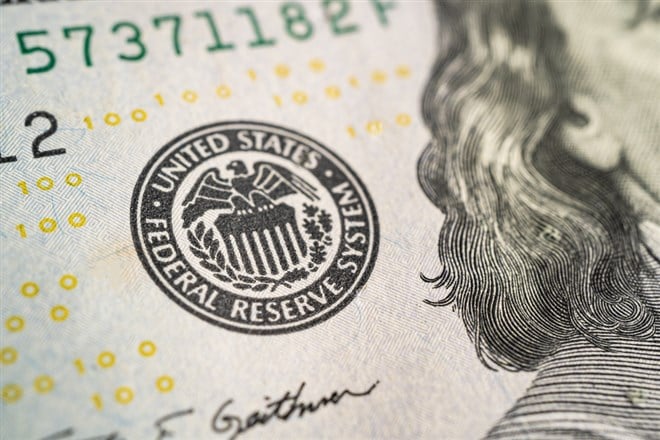TickerTalk Headlines for August 20th
In this newsletter:
Why Traders Are Betting Big on Gold and Defense Stocks Now
Investors can find out where the market’s attention is headed in the near future through proper tools like volume scanners or options contracts filters. Recently, three stocks connected the dots under a common theme from Wall Street traders, one that retail investors would be smart to consider and follow today.
But, before digging into the leading cause and belief that drew these traders into call option trades for these stocks, investors need to understand what buying an options contract implies:
- Puts and Calls: When buying a call option, the directional bet is that the underlying stock will move higher, and a put is a bet on the stock moving lower. This is the first caveat of an options trade.
- Timing: Since options contracts have an expiration date, traders need to be accurate in both the direction and timing of the trade. If it takes too long to reach a target price, the contract can expire worthless.
Knowing that the stakes are higher when trading options, investors need to pay attention when unusual options activity is happening around a stock, and even more so for a common group of stocks. This is why connecting the dots for unusual options activity for the iShares Gold Trust ETF (NYSEARCA: IAU), backed by interest for Barrick Gold Corp. (NYSE: GOLD), and wrapped around by an additional trade in weapons manufacturer Lockheed Martin Co. (NYSE: LMT).
Goldman Sachs Predicts New Highs for Gold Prices
That’s good for the iShares Gold Trust ETF since investors can get direct exposure to the price action of precious metals without buying futures or physical gold. Analysts at Goldman predict that gold prices can reach up to $2,700 an ounce this year, a view backed by falling fiat currency valuations.
Most investors might not realize that a significant driver of U.S. dollar valuations is the direction of interest rate policy. With the Federal Reserve (the Fed) looking to cut interest rates before the end of the year, the dollar’s value might be facing a downtrend in the coming months.
According to the CME’s FedWatch tool, these cuts are predicted to be here as soon as September 2024. Because gold is quoted in U.S. dollars, a fall in the dollar’s value has a direct bullish effect on gold’s price, which is probably why traders felt comfortable buying call options for this ETF now that the timing of the trade is clear-cut.
Barrick Gold's Strong Quarterly Results Fuel Trader Confidence in Gold Bets
Here’s what’s interesting and probably why traders chose to buy call options for Barrick Gold stock. While the price of gold has risen to new all-time highs, Barrick Gold stock has yet to break above its 2023 highs, creating a potential arbitrage opportunity for these traders to profit from the catch-up.
Investors can find further evidence of bullish sentiment by looking deeper into the company’s latest quarterly results. Management guidance sets the pace for the rest of the year, citing more production underway with lower costs attached to it.
These are the ingredients for an expansion in what matters most for investors: earnings per share (EPS).
Wall Street analysts now forecast up to 31.9% EPS growth in Barrick Gold for the next 12 months, a view rooted in management’s guidance and the company’s recent financial momentum. CIBC also landed on a price target of $27 a share for Barrick Gold stock, daring it to rally by as much as 37% from where it trades today.
More than a price action discount, investors can find Barrick Gold stock trading at a valuation discount compared to peers. On a price-to-book (P/B) multiple basis, Barrick Gold trades at only 1.1x, which is the average valuation for the basic materials sector set, which is 3.5x.
A Flight to Safety Means Lockheed Martin Stock Gains as Investors Seek Protection
Investors refer to more gold demand as a flight to safety, which directly implies that dangers lurk around the world and the market. These dangers take the form of geopolitical tensions that could lead to conflicts, especially between the United States and other powerhouses like Russia and China.
Building on this sentiment, governments and investors are flying to gold as insurance, but traders also chose Lockheed Martin stock as a potential way to profit from any breakout in volatility caused by global events.
After rallying by nearly 20% on the most recent quarterly earnings announcement, Lockheed Martin stock investors realized there must be more upside to be had in this stock, which is also a sign of the flight to safety trade.
Wall Street analysts now forecast 7.8% EPS growth for the company in the next 12 months, but that might be understating the company’s actual earning power.
Free cash flow (operating cash flow minus capital expenditures) grew from $771 million to $1.5 billion over the past 12 months, a more accurate measure of any business's earning power. Seeing this growth, management guided for higher sales and net orders (a backlog that is now $158.3 billion) for the rest of 2024.
Analysts at Bank of America decided to stand out from the pack and recommend this stock as a buy. With a price target set at $635 a share, they dare the stock to rally by as much as 13.4% from where it trades today.
Alex's "Next Magnificent Seven" Stocks (Ad)
Today Alex Green is releasing his new breakdown of AI's "Next Magnificent Seven."
So please make some time to watch it.
Decoding Jackson Hole: The Fed's Impact on Your Stock Portfolio
The financial world is holding its breath as the annual Jackson Hole Economic Symposium takes center stage, with Federal Reserve Chair Jerome Powell's highly anticipated speech on Friday morning. His speech will carry significant weight, potentially setting the course for the stock market through the remainder of 2024 and beyond. While recent weeks have seen positive market momentum, lingering economic uncertainties make this event crucial for investors seeking to understand the Federal Reserve's policy trajectory and its implications for their portfolios.
Rate Cut Expectations: Fueling the Summer Rally?
The stock market's recent performance reflects investors' growing belief that the Fed is nearing the end of its rate-hiking cycle. The S&P 500 index, a widely watched benchmark, has surged by over 15% since its October 2022 lows, with the tech-heavy Nasdaq Composite posting even more substantial gains.
This bullish sentiment is primarily driven by market expectations for a rate cut at the September Federal Open Market Committee (FOMC) meeting. According to the CME FedWatch tool, which tracks market-based probabilities of Fed actions, traders are currently pricing in a 72% chance of a 0.25% rate cut and a 28% chance of a more aggressive 0.50% reduction.
This optimistic outlook has increased due to recent economic data and analyst commentary. Notably, Goldman Sachs (NYSE: GS) recently downgraded its probability of a U.S. recession, citing cooling inflation and resilient consumer discretionary spending. This shift in outlook underscores the connection between market sentiment, economic projections, and the anticipation of a more accommodative monetary policy.
Decoding Powell's Potential Messages: A Fork in the Road for Stocks
Before looking at the potential scenarios, it's crucial to understand the language of central bankers. When analysts describe the Fed as "hawkish," they refer to a stance that prioritizes fighting inflation, even at the risk of slowing economic growth. This often signals higher interest rates or slower rate cuts.
Conversely, a "dovish" Fed is seen as more concerned with supporting economic growth and employment, even if it means tolerating slightly higher inflation. This stance typically points towards lower interest rates or faster rate cuts. While the market is betting on a dovish Fed, Powell's speech will likely dictate the next leg of the stock market's performance. His message could fall anywhere on the spectrum, from hawkish to dovish.
Scenario 1: A Hawkish Surprise
Investors should be prepared for the possibility that Powell strikes a more cautious tone than the market anticipates. Key indicators of a hawkish stance could include:
- Emphasis on Inflation: Reiterating that inflation, while moderating, remains above the Fed's 2% target and requires continued vigilance.
- Resilient Consumer Spending: Highlighting the strength of consumer spending as a sign that the economy can withstand higher rates.
- Tight Labor Market: Downplaying any recent softening in the labor market and emphasizing the need to prevent a wage-price spiral.
A hawkish surprise could trigger a wave of risk aversion, leading to a broad market sell-off. Sectors susceptible to interest rate changes, such as technology, real estate, and consumer discretionary, could face significant headwinds. Investors should recall the market's reaction in August 2022, when a similarly hawkish message from Powell at Jackson Hole sparked a sharp decline in equities.
Scenario 2: Confirming the Dovish Pivot
Conversely, Powell could use his platform to solidify expectations of a rate cut, potentially sparking a continuation of the current market rally. Signals of a dovish tilt might include:
- Global Economic Concerns: Expressing worry about slowing global growth and its potential spillover effects on the U.S. economy.
- Labor Market Weakness: Highlighting emerging signs of weakness in the labor market, such as rising unemployment claims or slowing wage growth.
- Easing Inflationary Pressures: Acknowledging that inflation is demonstrably on a downward trajectory.
Market Impact: A dovish message from Powell would likely embolden investors, driving further gains in the stock market. Growth-oriented sectors like semiconductors, renewable energy, and communication services benefit from a lower-rate environment and could see significant upside potential.
Expert Opinions and Positioning Your Portfolio
Economists are divided on how aggressively the Fed will act. Citi Global Markets (a division of Citigroup (NYSE: C)) analysts, for example, predict 50 basis point rate cuts in both September and November, citing growing risks to the labor market. In contrast, Dreyfus-Mellon's (NYSE: BK) analysts expect a more measured approach, with Powell likely emphasizing the need to maintain a restrictive policy stance until inflation is firmly under control.
Regardless of Powell's message, investors should avoid making impulsive decisions based solely on short-term market reactions. Maintaining a long-term investment horizon and a strategy aligned with individual risk tolerance and financial goals is crucial.
However, investors can proactively consider potential portfolio adjustments:
- In a Hawkish Scenario: Shifting towards more defensive sectors like consumer staples, healthcare, and utilities, which tend to be less sensitive to economic downturns. Alternatively, exploring value stocks, which are often overlooked in a growth-driven market, could provide some downside protection.
- In a Dovish Scenario: Maintaining or increasing exposure to growth sectors such as technology and consumer discretionary, which are poised to benefit from continued economic expansion and a lower rate environment.
Jerome Powell's speech at Jackson Hole is a pivotal moment for investors. His message will shape market expectations for the remainder of the year and impact asset allocation strategies. By understanding the potential scenarios and their implications, investors can approach this critical event with clarity and make informed decisions that align with their long-term financial objectives.
Crypto Crash: Is This Your Golden Chance? (Ad)
Markets are volatile right now—stocks, cryptos, you name it.
But here's a crucial fact everyone is missing:
While traditional investments are floundering, the next big tech wave is charging ahead: Artificial Intelligence.
3 Affordable Stocks Under $10 Ready to Rebound Soon
When markets start to get choppy, investors typically look for the most affordable stocks that promise some upside potential for the coming quarters. After the S&P 500 had a small version of a “flash crash” triggered by the unwind of the so-called “carry trade” between the Japanese yen and U.S. dollar, a quick recovery signaled markets that things might be better than they seem.
Because of this, investors might want to start looking into stocks that aren’t too high in price so that any rally in their niches will represent a larger percentage gain due to price alone. Today, a list of stocks that currently trade below $10 a share all bring a set of fundamental tailwinds to make this upside potential a reality. One of them even has Warren Buffett’s blessing behind it.
Making this list is cryptocurrency farmer and holder Riot Platforms Inc. (NASDAQ: RIOT), which could see better days after investors take on a risk-on attitude that could boost the price of cryptocurrencies like Bitcoin. Now that Buffett has bought – and boosted – his position in Occidental Petroleum Co. (NYSE: OXY) with a bullish view on oil prices, shares of Transocean Ltd. (NYSE: RIG) also promise some upside. Finally, a construction play is found in shares of Cemex (NYSE: CX) to catch the bottom of the mortgage cycle.
Riot Platforms Stock Poised for a Rebound as Bitcoin Enters a Risk-On Cycle
With the Federal Reserve (the Fed) promising interest rate cuts over the market, some are getting ready to load up again on Bitcoin, just like the last cycle of interest rate cuts. According to the CME’s FedWatch tool, these cuts might be here as soon as September 2024.
This gives investors a more realistic timeline for expecting to see a few gains Riot Platforms stock could hold for them. Analysts at Cantor Fitzgerald think the stock could be worth up to $23 a share, which calls for up to 187% upside from where the stock trades today, below $10 a share for $8.
The most recent Bitcoin holdings data reported by the company’s investor relations website drives this upside. It shows up to 9,704 Bitcoin as of July 2024. Today’s average price of $60,000 per Bitcoin means up to $582.4 million worth of assets held in Bitcoin alone.
If the price of Bitcoin were to surge starting—or leading up to—September, then investors could likely see the potential upside in this cryptocurrency stock. Knowing that this could be the future for the company, bears decided to bail out of their short positions, as judged by the 6.4% decline in short interest over the past month alone.
Buffett's Bullish Oil Outlook Could Propel Transocean Stock Higher
The downside of being a mega investor like Buffett is that he cannot buy a significant share of a small company, one that could be enough to move the needle for his entire fund. Since Transocean is so cheap and small in market share, Buffett's bullish oil view has to be exercised through a bigger company like Occidental Petroleum.
One benefit for retail investors is that size is no issue. Transocean is set to get paid and generate earnings before companies like Occidental do since it operates in the energy sector's contract and drilling equipment leasing niche. Knowing this, one of the company's directors bought up to 2 million shares as of August 2024.
More than that, analysts at Benchmark agreed on a price target of up to $8 a share for Transocean stock as recently as August. To prove these analysts right, the stock would need to rally by as much as 53.8% from where it trades today, and the same September rate cut timeline applies to this stock as well.
Goldman Sachs analysts predict that oil prices could reach up to $100 a barrel this year, pushed by the ensuing demand for oil as the business cycle bottoms and runs back up on lower interest rates and more flexible financing environments.
Likewise, Transocean stock's short interest declined by 2% over the past month, showing early signs of bearish capitulation.
Real Estate Demand Cycle Boom Poised to Lift Cemex Stock
Looking at the current state of the real estate sector, potential rate cuts from the Fed could spark a new wave of demand and help construction materials stocks like Cemex rally from their current levels.
The Mortgage Market Index is at a level not seen since 1997, and building permit data have been contracting for a few months now. Many would-be buyers are sitting on the sidelines, waiting for better mortgage rates to help them make a new purchase.
Knowing that the risk-to-reward scale is so beneficial now, Wall Street analysts forecast up to 17.6% earnings per share (EPS) growth in the next 12 months for Cemex stock, helping those at Morgan Stanley land on a $12 a share price target as recently as July 2024.
To prove these analysts right, the stock would need to rally by 79.1% from its current price, realizing the higher percentage returns that come with operating in a sock that trades below $10 a share.
AI is dumber than you think (Ad)
All of the hype around artificial intelligence has been nothing but an artificial illusion…
Share this link with everyone you know. >





没有评论:
发表评论